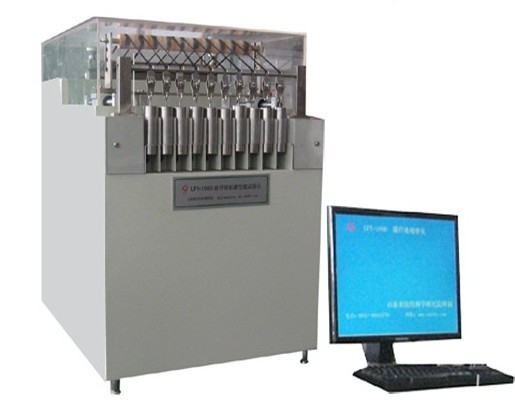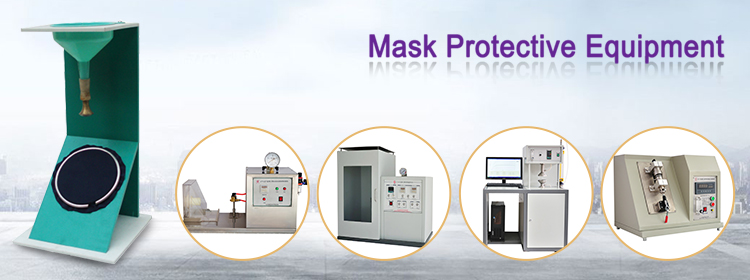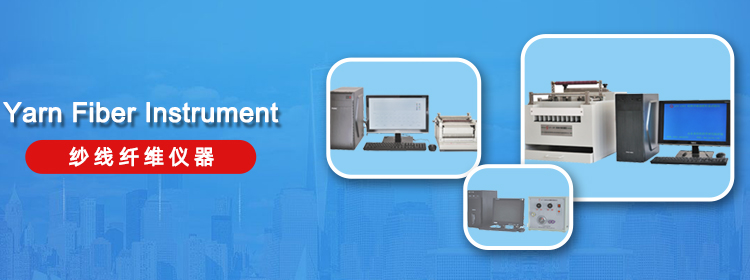
LFY-109T Special Fiber Wear Tester
The main purpose
The LFY-109T special fiber wear resistance tester is mainly suitable for the determination of the wear resistance of special fiber materials (polytetrafluoroethylene fiber, high temperature resistant fiber, aramid fiber, glass fiber, optical fiber, mesh cable, etc.).
Technical characteristics
1. Special fixture design for different samples, not to damage the sample, and to ensure the clamping of the sample
2. The non-contact photoelectric switch detects the wear and tear of the sample
3. The friction angle can be adjusted and can be selected and determined according to the experimental situation
4. The abrasive is selected from the standard grinding wheel and roller abrasives on the market, which is convenient to obtain materials and the abrasive installation structure is convenient for regular replacement
5. Equipped with pre-tensioned weights of different gears, which can be selected and used according to the condition of the sample
6. The instrument adopts a constant-speed reciprocating friction method, ten-station test, and the test reproducibility is good.
7. The computer automatically controls the detection and data processing. Through the test, the average wear resistance of each batch of yarns tested, the coefficient of variation of wear resistance, the maximum value, the minimum value and the single value of ten stations can be displayed.
Technical index
1. Number of test samples: 10 pieces;
2. Friction method: uniform speed;
3. Friction speed: about (60±2) times/min;
4. Weight of weight: 125g, 250g each 20 (can be combined into 125g, 250g, 500g, 750g four gears);
5. Friction material: No. 60 grinding wheel roller;
6. Computer configuration: standard configuration;
7. Output mode: computer display or printing;
8. Friction times: the test will stop when the sample is worn off at this station, and it will be counted automatically;
9. Data output items: maximum value, minimum value, average friction times, coefficient of variation of friction times, single value;
10. The friction angle can be adjusted and determined according to the experimental situation, 10°, 20°, 30°, 40°;
11. Design a shielding cover on the equipment to prevent fibers from flying randomly;
12. Power consumption: AC 220V, 50Hz, 1100W.
The LFY-109T special fiber wear resistance tester is mainly suitable for the determination of the wear resistance of special fiber materials (polytetrafluoroethylene fiber, high temperature resistant fiber, aramid fiber, glass fiber, optical fiber, mesh cable, etc.).
Technical characteristics
1. Special fixture design for different samples, not to damage the sample, and to ensure the clamping of the sample
2. The non-contact photoelectric switch detects the wear and tear of the sample
3. The friction angle can be adjusted and can be selected and determined according to the experimental situation
4. The abrasive is selected from the standard grinding wheel and roller abrasives on the market, which is convenient to obtain materials and the abrasive installation structure is convenient for regular replacement
5. Equipped with pre-tensioned weights of different gears, which can be selected and used according to the condition of the sample
6. The instrument adopts a constant-speed reciprocating friction method, ten-station test, and the test reproducibility is good.
7. The computer automatically controls the detection and data processing. Through the test, the average wear resistance of each batch of yarns tested, the coefficient of variation of wear resistance, the maximum value, the minimum value and the single value of ten stations can be displayed.
Technical index
1. Number of test samples: 10 pieces;
2. Friction method: uniform speed;
3. Friction speed: about (60±2) times/min;
4. Weight of weight: 125g, 250g each 20 (can be combined into 125g, 250g, 500g, 750g four gears);
5. Friction material: No. 60 grinding wheel roller;
6. Computer configuration: standard configuration;
7. Output mode: computer display or printing;
8. Friction times: the test will stop when the sample is worn off at this station, and it will be counted automatically;
9. Data output items: maximum value, minimum value, average friction times, coefficient of variation of friction times, single value;
10. The friction angle can be adjusted and determined according to the experimental situation, 10°, 20°, 30°, 40°;
11. Design a shielding cover on the equipment to prevent fibers from flying randomly;
12. Power consumption: AC 220V, 50Hz, 1100W.







